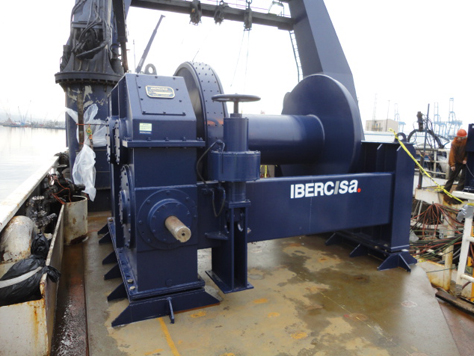



See
our
credentials
our
credentials
Press releases
05/09/2016
SMM 2016: Present and future of hybrid vessels
In today’s naval industry it is difficult to find a forum, fair or congress in which hybrid technologies are not present so what makes them so attractive? Up until now energy on vessels were moved only in one direction (from generators to propulsion). The introduction of diesel electric propulsion gave greater flexibility allow to drive energy along cables instead of traditional mechanical transmissions.
The use of frequency converters gave greater precision in control of same, facilitating speed, par and power regulation.
AFE technology added the possibility of returning energy to the system, allowing recuperation of energy in the braking processes making savings possible not only on that which is lost in the same braking process but also that used by the auxiliary cooling systems to maintain the temperature on the braking elements.
The limitation of using friction braking systems also means a big decrease in machine maintenance costs giving greater durability.
Lastly the improvements in electric storage, new, cheaper lithium batteries with greater capacity and longer life allow us to make a more efficient use of energy making the internal combustion motors used for its generation work at constant rates thereby maximizing their efficiency and at the same time giving us extra capacity of instant power larger than that installed, minimizing the size of the generators and optimizing consumption.
This form of storage has other advantages such as increased safety (avoiding black-outs), or improvements in drive reply giving higher power ramps than those on traditional systems. Also the standardizing of components and their arrangement in DC bus (various rectifiers feeding a common bar from which inverters which drive the machines are hung) allow us to generate redundant and low maintenance systems.
In order to enjoy all the advantages of these new technologies it is necessary to have electric machines with variable speed drives. At Ibercisa deck machinery we have developed a whole system of electrical deck machinery which allows maximum exploitation of these advantages, incorporating specific control systems for each application (Fishing, Towing, Offshore) where apart from improving efficiency on the machines, they can enjoy to the maximum all their benefits (fast dynamic response, brake and par control, accuracy position…), using closed loop regulation system with peripheral monitoring. The DC bus drive permits the creation of redundant systems and their integration with any type of electric power plant.
Ibercisa News:
PRESS CONTACT
Nieves García
press@ibercisa.es
press@ibercisa.es
IBERCISA ON TWITTER
Tweets por el @Ibercisa.

